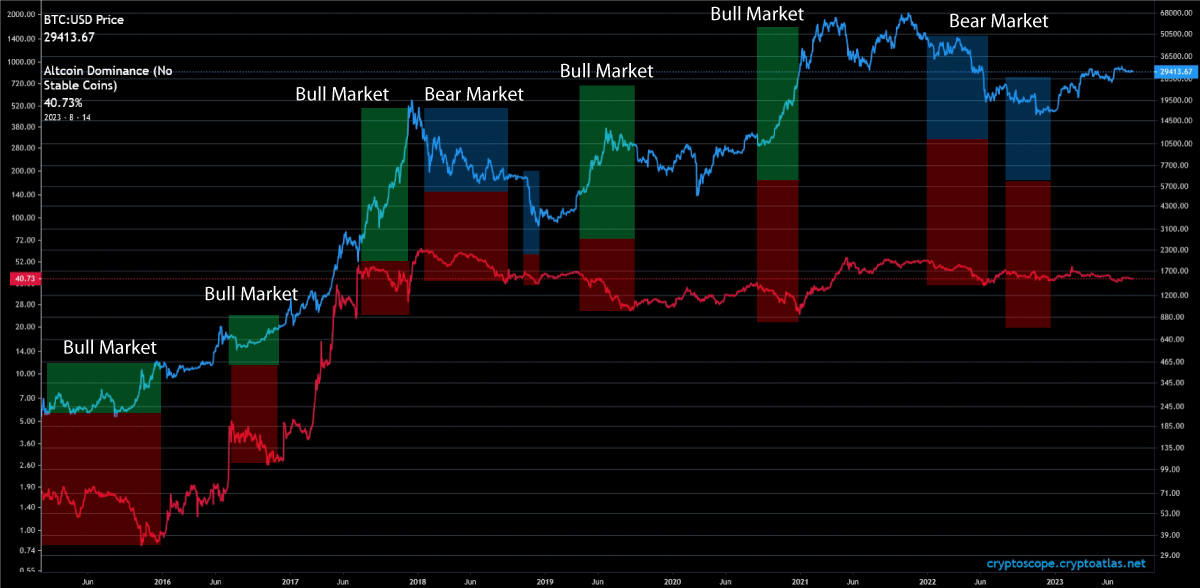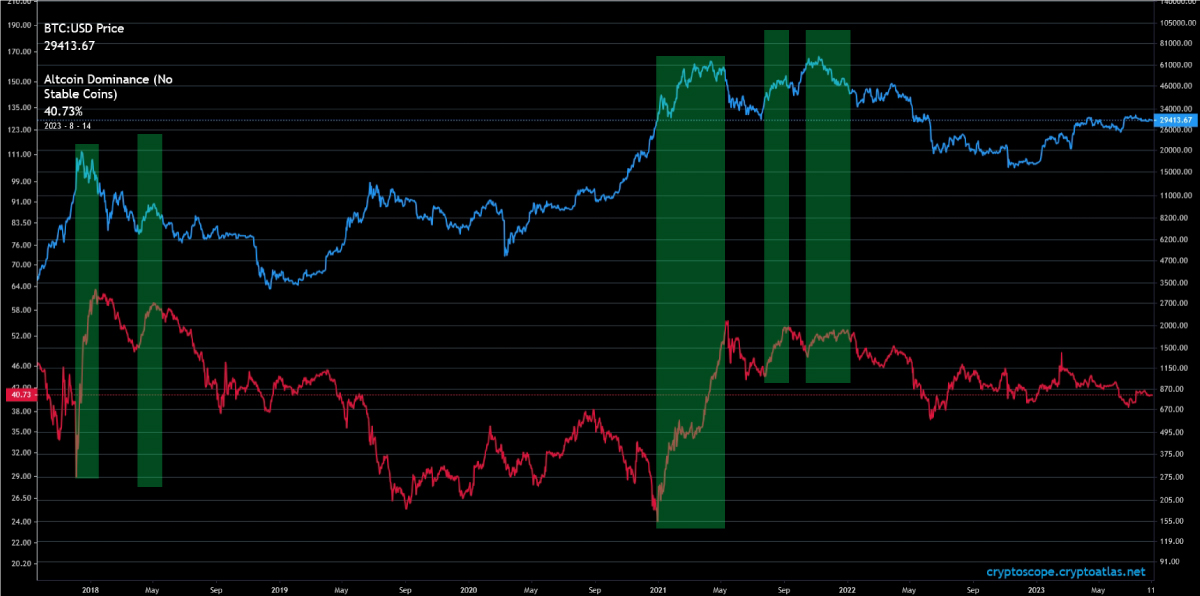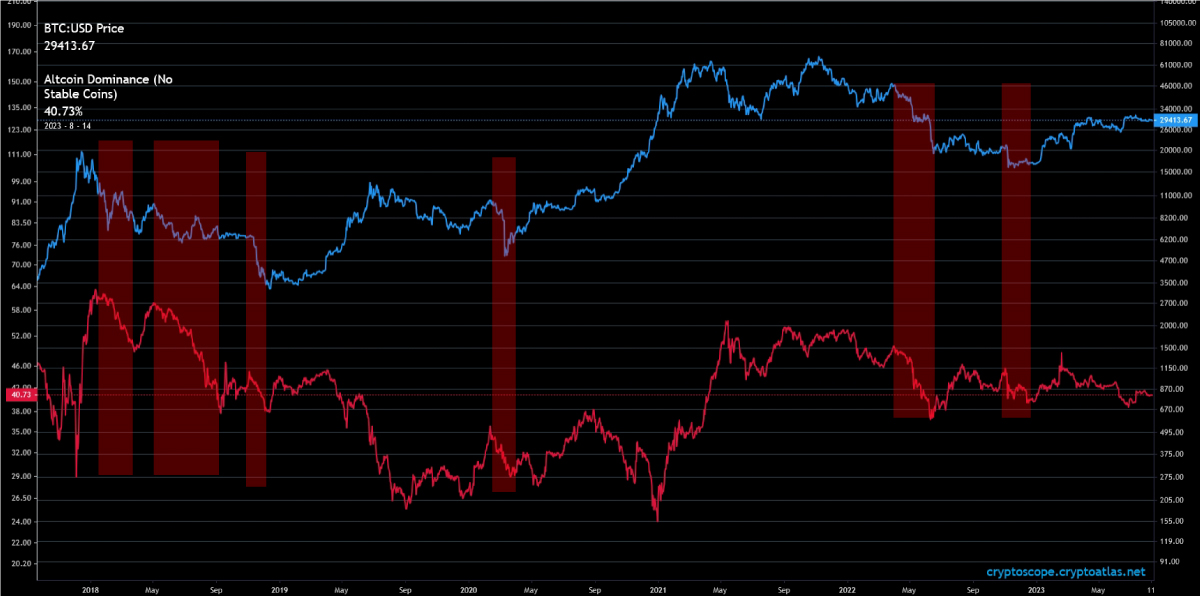Chart Insights: How Bitcoin Price Swings Affect Altcoin Dominance
It is no surprise that Bitcoin volatility affects Altcoins in both positive and negative manners. We can use Bitcoin’s volatile moves of the past to predict how the altcoin dominance might move in the future when Bitcoin decides to move violently.
There are two main times when Bitcoin Price swings affect the Altcoin Dominance Depicted below.
Raging Bitcoin Bull Markets and the Altcoin Dominance
Bull markets very often cause the altcoin dominance to crash transiently, as Bitcoin becomes the hot commodity. During this time, altcoin:BTC pairs like ETH:BTC crash, almost all altcoins crash in value against BTC. Though in bull markets it's very likely that most assets appreciate against the US dollar.
Subsequently, the altcoin dominance also crashes. Once BTC has exhausted the majority of its fuel, it either goes sideways or starts its decline, typically at the top of the bull market.
Usually during this period, liquidity flows from Bitcoin to Ethereum and from Ethereum into more speculative cryptocurrencies, which we refer to as “Shitcoins".
These are altcoins that have a much lower market cap and are pretty much valued based on speculation. Altcoins of this type are subject to incredible risk and are many times more volatile than Bitcoin.
When Bitcoin goes up or down in violent manners, these Altcoins move in greater orders amplifying potential risk/reward.
Down below we can see how Bitcoin’s volatile movements affect the Altcoin Dominance.

Depressive Bitcoin Bear Markets and the Altcoin Dominance
Bear markets tend to last 8 to 12 months in length. During the beginning and ending of the bear market, Bitcoin tends to drop in a volatile manner. As Bitcoin drops, capital from altcoins flows into Bitcoin. This happens since investors tend to lower their exposure to riskier assets.
As previously mentioned, altcoins are much more risky assets typically purchased on speculation. When the crypto is in a bear market, capital flows from altcoins to Bitcoin. Overall, this is projected in the altcoin dominance. The Altcoin dominance drops as a result, in bear markets.
After the bear-market is near end, the altcoin dominance usually goes sideways and upwards as investors and speculators increase their risk appetite.
The image below illustrates the altcoin dominance dropping in bear markets only to go sideways thereafter.


